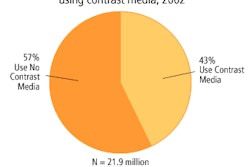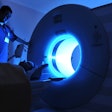It's enough to make a grown administrator shudder -- that sinking feeling that comes with finding out you need to replace a part in your clinical equipment. You've just been notified that the CT scanner needs a new tube. The original equipment manufacturer (OEM) has quoted $42,000 for the replacement part and can install it first thing in the morning.
Your radiology engineer has informed you that a direct replacement tube can be purchased for $16,500, but needs your decision immediately so that delivery and installation can be arranged. The CT supervisor has told you that the OEM won't service the system if a non-OEM part is installed. The department is already over budget this quarter and you need to cut additional costs. How can you pass up this opportunity to save $25,500?
Although the situation seems dismal, it isn't hopeless. By managing service options objectively, you can be assured that you're paying the lowest cost possible in addition to maintaining clinical viability. To develop such an approach, you must first know your options and assess your needs. Success relies on managing a seldom discussed, but often influential, element in making service decisions: fear, uncertainty, and doubt -- also known as the FUD factor.
In the nearly quarter century we've spent working with healthcare organizations to lower and control parts and labor costs, we have seen many OEMs attempt to ingrain the FUD factor in clients -- both to influence the client to purchase only its parts or its service contract. The result is a significantly higher cost for the healthcare facility and a much healthier profit margin for the OEM.
FUD in action
These are just a few of the ways vendors use the FUD factor to get healthcare providers to make decisions in the OEM's best interest rather than that of the healthcare organization.
Independent service organization (ISO) replacement parts are not the same quality. Our OEM replacement parts go through special quality assurance testing before they are put back into circulation.
In fact, the standard process for testing and reselling refurbished, replacement parts by both the OEM and an ISO is that after the part has failed, it goes through a repair process and is tested to meet standard quality requirements. It is then placed into an operating system to ensure that it works properly; finally, it is packaged and inventoried for future use. This is standard practice with both ISOs and OEMs.
We always use new parts, whereas independent companies utilize used parts.
It is true that on brand-new technology, new parts are used when replacements parts are required; however, this time period is short-lived. Once a device has been on the market for a year or so, refurbished parts will become available. At that time most organizations will have a repair process as previously described. So whether the part is new or refurbished, the key is that it be fully operational and provides the desired results.
Please sign this release statement, since you want us to install this non-OEM procured part. If this part fails or causes damage to your system, we will not be responsible.
This is a very strong form of intimidation and an extreme example of using the FUD factor. However, by knowing what part is being installed, you can safely ignore such threatening requests.
Many of the parts purchased from non-OEM suppliers are the same parts the OEM would have provided. A perfect example would be a disk drive. Most medical OEMs are not manufacturing their own drives; they are purchasing them from a computer supply company, and then having them formatted to work with their equipment. The question is simply whether the part itself is or is not going to work.
Without our service agreement, we will not be able to respond to your service needs in a timely manner.
Any customer service-orientated organization will respond to their customers on the basis of the equipment's needs. Service is prioritized based on whether the equipment is operating fully, partially, or not at all.
In fact, the service company should be motivated to respond to their time-and-materials customers because if they don't, there are other companies more than happy to take their business. Service contract customers are tied to the service agreement, and the dollars have already been paid and received; therefore, the incentive to provide quality service can be diminished.
Controlling the FUD factor
Fortunately, you can deal with the FUD factor and maintain control of your cost and viability through a simple process.
- Address all FUD issues at the time of equipment purchase. The sale of a piece of equipment should not include only the hardware, but also service during and after the warranty. Make it clear that you are the customer, and that you'll decide what your maintenance needs are and how they will be paid for in the future. Before you sign off on the purchase proposal, make sure the vendor is going to meet all of your needs at the time of sale, as well as after the equipment has been installed.
- Ask vendors to put what they say in writing. Our experience has been that what many vendors put in writing frequently differs from what they say; most vendors will not put the type of negative statements above in writing.
- Escalate your concerns through service management, as well as through sales. Make sure the vendor knows your expectations and that future purchases will be affected if your needs are not met.
- Have the vendor back claims with facts. If the vendor claims increased downtime, have the vendor provide comparison district/region data for response times for contract customers versus time-and-materials customers.
- Remain objective. This will permit you to identify statements that are based on opinions and those that are based on sound objective criteria.
- Ask yourself how you would handle a similar situation in your personal life. Most of us would make sure we are paying the lowest possible amount while expecting a positive outcome from a reputable supplier.
Overall, controlling the FUD factor will help healthcare managers make decisions that meet both clinical and financial needs, resulting in a healthier bottom line for your healthcare organization, as well as provide you with peace of mind.
By Judy Kujawa
AuntMinnie.com contributing writer
August 9, 2004
Judy Kujawa is director of equipment resources for USCS, a Brookfield, WI-based business unit of Thermo Electron that provides asset management services to hospitals, healthcare facilities, and laboratories.
Related Reading
Repair charges in five modalities show stability over three-year span, March 29, 2004
Ultrasound transducer replacement costs, February 10, 2004
X-ray, image intensifier tube costs decline, November 25, 2003
MRI/CT maintenance labor rates show biggest increase, August 11, 2003
Spelling out the terms of large equipment purchases, September 20, 2002
Copyright © 2004 USCS



















